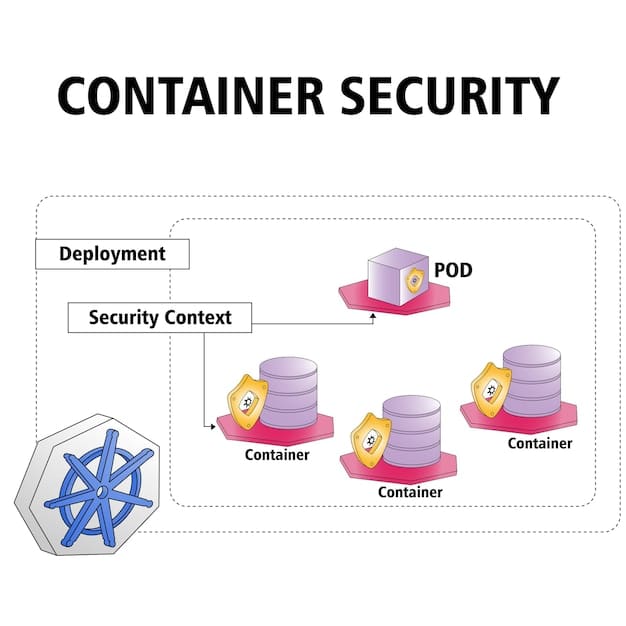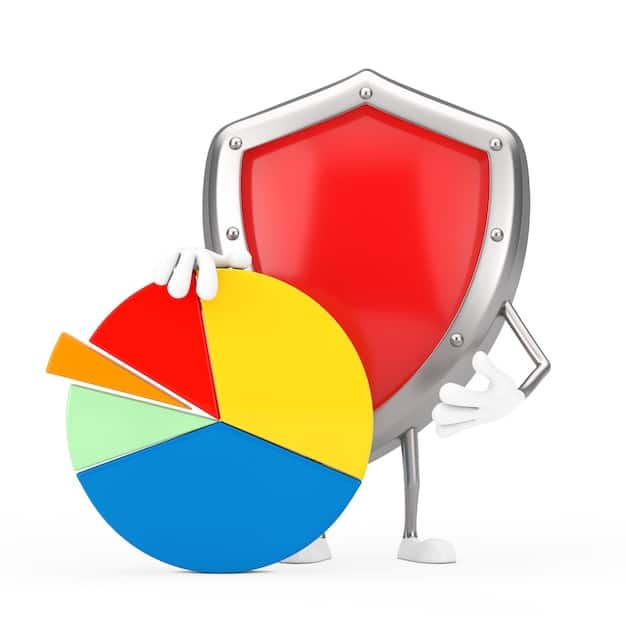New 2025 E-commerce Security Updates: Impact on US Businesses

The new January 2025 e-commerce platform security updates will significantly impact US businesses by requiring enhanced data protection measures, potentially increasing compliance costs, and altering consumer trust dynamics, necessitating proactive adaptation to maintain competitiveness and security.
The e-commerce landscape in the US is about to change significantly. With the introduction of new security updates for e-commerce platforms in January 2025, businesses need to prepare for a new era of digital safety. Understanding how will the new January 2025 e-commerce platform security updates impact your US business is crucial for staying competitive and maintaining customer trust.
Understanding the Upcoming E-commerce Security Landscape
The digital marketplace is constantly evolving, and with it, the threats to data security. As we move closer to 2025, understanding the key changes in the e-commerce security landscape becomes paramount for US businesses. These updates are not just about adding layers of protection; they are about reshaping the way we approach online transactions and data handling.
Key Changes in E-commerce Security
The upcoming updates bring several significant changes to the table. These include enhanced encryption protocols, stricter data storage regulations, and more robust authentication methods. Let’s take a closer look at these key areas:
- Enhanced Encryption: Expect stronger encryption standards to protect sensitive customer data during transactions and storage.
- Data Storage Regulations: New rules will govern how and where customer data is stored, ensuring compliance with privacy laws.
- Authentication Methods: Multi-factor authentication (MFA) will become more prevalent, adding an extra layer of security for both businesses and customers.
These changes aim to create a safer online environment, fostering greater trust between businesses and consumers. However, they also pose challenges for businesses that need to adapt quickly.
Staying ahead of these changes requires a proactive approach. Businesses should start assessing their current security infrastructure and identify areas that need improvement. This includes upgrading software, implementing new security protocols, and training employees on best practices.
Preparing Your Business for Enhanced Data Protection Measures
One of the most significant impacts of the new updates is the need for enhanced data protection measures. This goes beyond simply installing a firewall; it involves a comprehensive overhaul of how your business handles, stores, and protects customer data. Preparing for these changes is not just about compliance; it’s about building a resilient and trustworthy business.

Implementing Strong Encryption Protocols
Encryption is the cornerstone of data protection. Strong encryption protocols ensure that sensitive information remains confidential, even if it falls into the wrong hands. Here’s how you can implement robust encryption:
- End-to-End Encryption: Ensure that data is encrypted from the moment it leaves the customer’s device until it reaches your servers.
- Regular Updates: Keep your encryption software and protocols up to date to protect against newly discovered vulnerabilities.
- Key Management: Implement secure key management practices to protect encryption keys from unauthorized access.
By implementing these measures, you can significantly reduce the risk of data breaches and protect your customers’ privacy.
Businesses also need to review their data retention policies. Storing data for longer than necessary increases the risk of a breach. Consider implementing a data minimization strategy, where you only collect and retain the data that is absolutely necessary for your business operations.
Navigating Increased Compliance Costs
The new security updates inevitably lead to increased compliance costs. From upgrading security infrastructure to hiring cybersecurity experts, the financial burden can be significant. However, viewing these costs as an investment rather than an expense can help businesses maintain a competitive edge.
Budgeting for Security Upgrades
One of the first steps in managing compliance costs is to create a detailed budget for security upgrades. This budget should include expenses such as:
- Software and Hardware: Upgrading security software and hardware to meet the new standards.
- Cybersecurity Experts: Hiring experts to assess your current security infrastructure and implement the necessary changes.
- Employee Training: Training employees on new security protocols and best practices.
Businesses should also explore cost-effective alternatives, such as cloud-based security solutions. These solutions often offer enterprise-grade security at a fraction of the cost of on-premise solutions. Additionally, consider leveraging government grants and tax incentives for cybersecurity upgrades.

Investing in compliance is not just about avoiding penalties; it’s about building a reputation for security and trustworthiness. Customers are more likely to do business with companies that prioritize data protection.
Altering Consumer Trust Dynamics
In the age of digital commerce, trust is a critical currency. The new security updates have the potential to significantly alter consumer trust dynamics. Businesses that proactively address these changes and demonstrate a commitment to security will be better positioned to win and retain customers.
Building Trust Through Transparency
Transparency is key to building trust with consumers. Be open about the security measures you have in place and how you are protecting their data. Consider implementing the following strategies:
- Privacy Policies: Clearly communicate your privacy policies, explaining how you collect, use, and protect customer data.
- Security Badges: Display security badges and certifications on your website to demonstrate your commitment to security.
- Regular Updates: Keep customers informed about any security incidents or updates to your security protocols.
The impact of negative publicity from security breaches can be devastating, leading to loss of customers and damage to your brand reputation. Prioritizing security and transparency can help mitigate these risks.
Businesses that prioritize security not only protect their customers but also gain a competitive advantage. In a world where data breaches are becoming increasingly common, customers are actively seeking out businesses that they can trust.
Adopting Proactive Adaptation Strategies
Adaptation is the name of the game in the ever-evolving e-commerce landscape. Proactive adaptation strategies are essential for businesses looking to stay ahead of the curve and thrive in the face of new security challenges. This involves not only implementing new security measures but also fostering a culture of security throughout the organization.
Continuous Monitoring and Assessment
One of the most effective ways to adapt to new security threats is through continuous monitoring and assessment. This involves:
- Regular Security Audits: Conducting regular audits to identify vulnerabilities in your security infrastructure.
- Penetration Testing: Simulating cyberattacks to test the effectiveness of your security measures.
- Threat Intelligence: Staying informed about the latest security threats and vulnerabilities.
By continuously monitoring and assessing your security posture, you can identify and address potential vulnerabilities before they are exploited.
Proactive adaptation also involves staying up-to-date on the latest security technologies and best practices. Attend industry conferences, read cybersecurity publications, and network with other security professionals to stay informed.
Ensuring Business Continuity and Minimizing Disruption
Implementing new security updates can be disruptive to business operations. However, with careful planning and execution, businesses can minimize disruption and ensure business continuity. This involves not only preparing for technical changes but also addressing the human element of security.
Planning for Downtime and Contingencies
One of the most important steps in ensuring business continuity is to plan for downtime and contingencies. This includes:
- Backup and Recovery: Implementing a robust backup and recovery system to protect against data loss.
- Disaster Recovery Plan: Developing a plan to restore business operations in the event of a major security incident.
- Communication Plan: Establishing a communication plan to keep employees, customers, and stakeholders informed during a security event.
Businesses should also consider investing in redundancy and failover systems to minimize downtime. This includes having backup servers, network connections, and power supplies.
Minimizing disruption also involves training employees on how to respond to security incidents. Conduct regular security awareness training to educate employees on phishing scams, malware, and other security threats.
Conclusion
The new January 2025 e-commerce platform security updates represent a paradigm shift in the way US businesses approach online security. By understanding the key changes, preparing for enhanced data protection measures, navigating increased compliance costs, and adopting proactive adaptation strategies, businesses can not only meet the new requirements but also build a more secure, resilient, and trustworthy online presence. The future of e-commerce depends on a collective commitment to prioritizing security and protecting customer data.
| Key Point | Brief Description |
|---|---|
| 🛡️ Data Protection | Enhanced measures to secure customer data. |
| 💰 Compliance Costs | Budgeting for security upgrades and training. |
| 🤝 Consumer Trust | Building trust through transparency and security badges. |
| 🔄 Adaptation | Continuous monitoring and proactive strategies. |
FAQ
▼
The updates focus on enhanced encryption, stricter data storage regulations, and stronger authentication methods to protect customer data and transactions, aiming for a safer online environment.
▼
Businesses can budget for upgrades, explore cost-effective solutions like cloud-security, and leverage government incentives to manage expenses while improving security measures.
▼
Adopting continuous monitoring, regular security audits, penetration testing, and staying informed about the latest threats can help businesses proactively enhance their security.
▼
The updates enhance consumer trust by prioritizing data protection and transparency. Businesses demonstrating commitment to security will likely win and retain more customers.
▼
Businesses can implement backup/recovery systems, develop disaster recovery plans, and train employees to minimize disruption and ensure operations can quickly resume after an incident.
Conclusion
The security updates of January 2025 are a call to action for US e-commerce businesses. Prioritizing these updates ensures not only compliance but also the security and trust necessary for sustained success in the digital marketplace.





